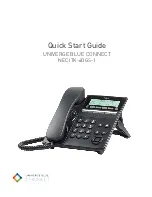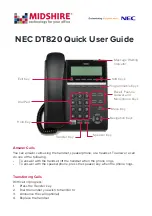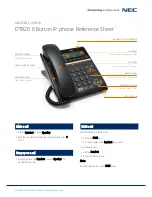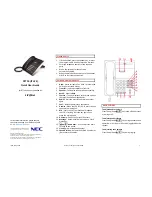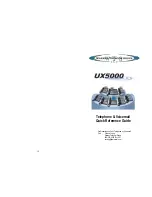
- 33/148 -
LG Electronics Inc.
M
X8550
2.3 Circuit Description
2.3.1 Keypad/LCD and Receptacle Part
Once the main keypad is pressed, the key signals are sent out to MSM6500 for processing. Touch keypad is pressed,
I2C and Ack signals of U101(touch IC) are sent out to MSM6500 for processing. In addition, when the key is pressed,
the keypad/LCD lights up through the use of 19 LEDs. The terminal status and operation are displayed on the screen
for the user with the characters and icons on the LCD.
Moreover, it exchanges audio signals and data with external sources through the receptacle, and then receives power
from the battery or external batteries.
2.3.2 Audio Processing Part
MIC signals are amplified through OP AMP, inputted into the audio codec (included in MSM6500) and converted
into digital signals. Oppositely, digital audio signals are converted into analog signals after going through the audio
codec. These signals are amplified at the audio amplifier and transmitted to the ear-piece. The signals from
MSM6500 activate the ringer by using signals generated in the timer in MSM6500.
2.3.3 MSM Part
MSM6500 is the core element of CDMA system terminal that includes ARM926EJ-S microprocessor core. It
supports both CDMA and Digital FM, operating in both the cellular and PCS spectrums. The subsystems within the
MSM6500 include a CDMA processor, a DFM processor, a multi-standard Vocoder, an integrated CODEC with
earpiece and microphone amplifiers, general-purpose ADC for subsystem monitoring, an ARM926EJ-S
microprocessor, and an RS-232 serial interfaces supporting forward and reverse link MDR data communications of
230.4 Kbps simultaneously. And it also contains complete digital modulation and demodulation systems for both
CDMA and AMPS cellular standards, as specified in IS-95-A/B/C.
In MSM, coded symbols are interleaved in order to cope with multi-path fading. Each data channel is scrambled by
the long code PN sequence of the user in order to ensure the confidentiality of calls. Moreover, binary quadrature
codes are used based on Walsh functions in order to discern each channel. Data created thus are 4-phase modulated
by one pair of Pilot PN code and they are used to create I and Q data.
When received, I and Q data are demodulated into symbols by the demodulator, and then de-interleaved in reverse to
the case of transmission. Then, the errors of data received from Viterbi decoder are detected and corrected. They are
voice-decoded at the Vocoder in order to output digital voice data.
Z3X-BOX.COM
Summary of Contents for MX8550
Page 26: ...Restart Z 3 X B O X C O M ...
Page 150: ...1 Assembly and Disassembly Diagram Z 3 X B O X C O M ...
Page 151: ...Z 3 X B O X C O M ...
Page 152: ...2 Block and Circuit Diagram Z 3 X B O X C O M ...
Page 156: ...Z 3 X B O X C O M ...
Page 157: ...Z 3 X B O X C O M ...
Page 158: ...Z 3 X B O X C O M ...
Page 159: ...Z 3 X B O X C O M ...
Page 160: ...Z 3 X B O X C O M ...
Page 161: ...Z 3 X B O X C O M ...
Page 162: ...Z 3 X B O X C O M ...
Page 163: ...Z 3 X B O X C O M ...
Page 164: ...Z 3 X B O X C O M ...
Page 165: ...Z 3 X B O X C O M ...
Page 166: ...Z 3 X B O X C O M ...
Page 167: ...3 Part List Z 3 X B O X C O M ...
Page 182: ...4 Components Layout Z 3 X B O X C O M ...
Page 183: ...Z 3 X B O X C O M ...
Page 184: ...Z 3 X B O X C O M ...
Page 185: ...Z 3 X B O X C O M ...
Page 186: ...Z 3 X B O X C O M ...
Page 187: ...Z 3 X B O X C O M ...
Page 188: ...Z 3 X B O X C O M ...
Page 189: ...Z 3 X B O X C O M ...
Page 190: ...Z 3 X B O X C O M ...


































